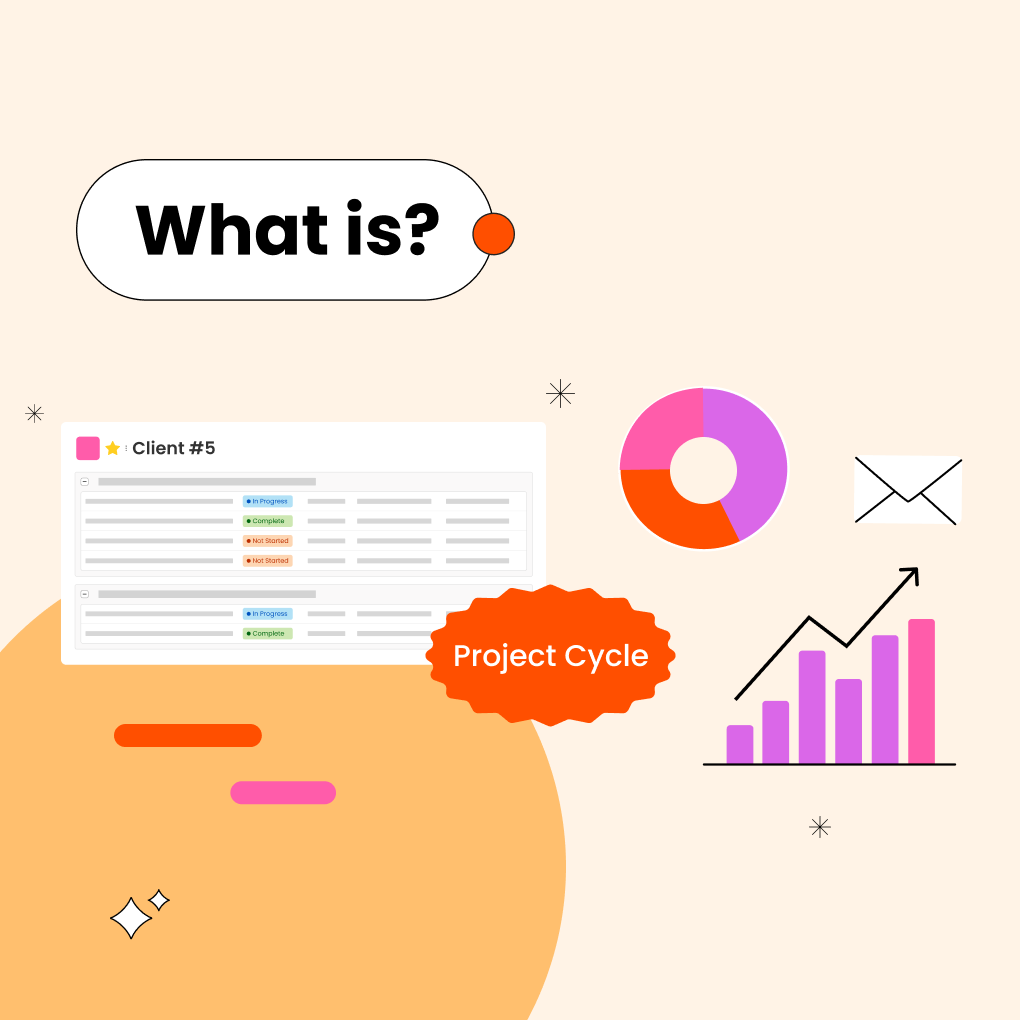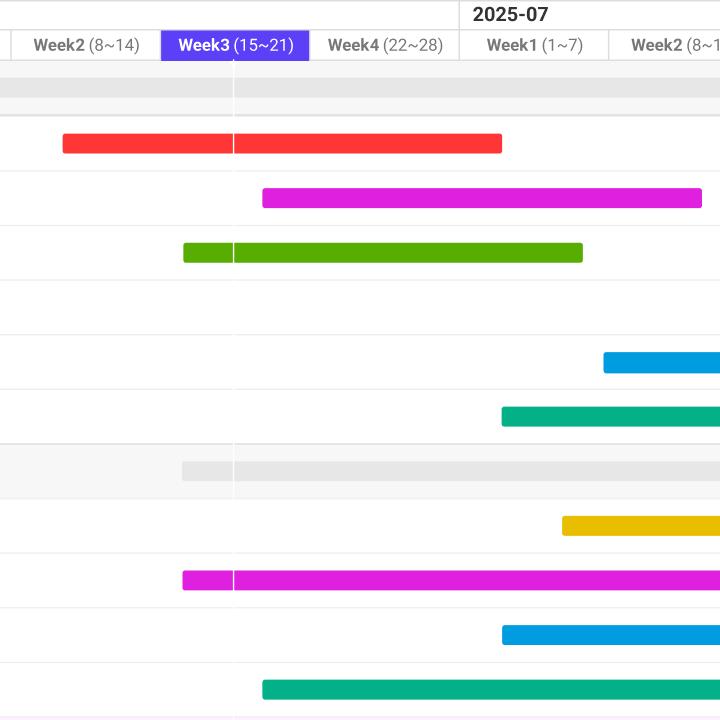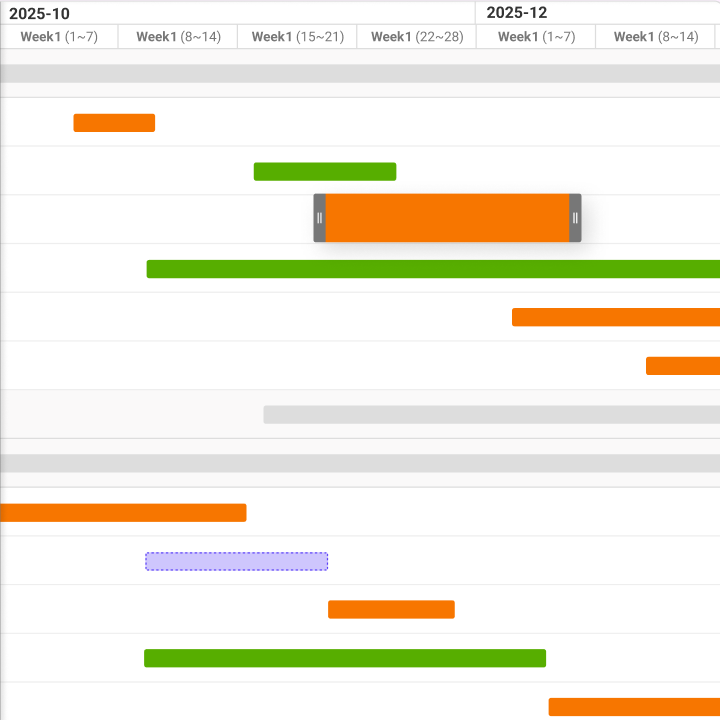Project cycle management is a systematic approach that guides a project from its inception to its final evaluation. This process includes meticulous planning, timely execution, and an honest assessment of results. By following this structured method, teams can effectively utilize both financial and human resources, ensuring accountability throughout the project.
For professionals who must adhere to deadlines and budgets, understanding project cycle management is crucial. This framework outlines a clear path from the initial budget proposal to the final project delivery, helping to minimize risks and enhance long-term outcomes.
Understanding Project Cycle Management
Project cycle management acts as a guiding framework that leads teams from the conception of an idea to the completion of a project. Teams typically divide the project into smaller, manageable tasks, completing each one systematically. This organized approach helps avoid confusion and promotes steady progress.
What is Project Cycle Management
Project cycle management is a structured process for planning, executing, and reviewing projects. It encompasses everything from brainstorming sessions to celebrating achieved milestones. By adhering to this framework, teams can remain mindful of their budgets and align their efforts with organizational goals.
Importance of Project Cycle Management
This management approach serves as a safeguard against project derailment. By segmenting the work into distinct phases, teams can spot potential challenges early and make necessary adjustments, preventing resource wastage. Clearly defined phases also minimize the risk of miscommunication regarding roles and responsibilities.
Who Benefits from Project Cycle Management?
Project cycle management is applicable to any team overseeing significant projects. Once team members grasp the process, it becomes more organized and efficient. Its value is recognized across various sectors, including engineering, education, and healthcare, leading to its broad adoption.
Non-Governmental Organizations (NGOs)
NGOs utilize this framework when deploying teams for tasks such as school repairs or emergency supply distribution. A structured plan enables them to showcase their achievements and the impact of their efforts clearly. This transparency is appreciated by funders, prompting many charities to adopt this method for sustained financial support.
Government and Donor Organizations
Local and national governments apply this framework for projects like road construction and public hospital openings. Mismanagement of funds can result in public dissatisfaction and job losses for officials. International lenders and multilateral organizations also adhere to these principles to ensure accountability and transparency in fund utilization.
The 6 Phases of Project Cycle Management
Project cycle management divides a complex project into six manageable phases, each with specific objectives. This structure helps teams stay focused and prevents important details from being overlooked. Let’s explore each phase:
Phase 1: Programming
During the programming phase, teams identify the key ideas they want to pursue. They gather community input, align with their organization’s mission, and assess available budget resources. This comprehensive view ensures that funded projects will have a meaningful impact. Teams analyze various solutions rather than rushing to a quick fix.
This initial phase saves time and effort by allowing teams to evaluate potential projects based on their impact, cost, and alignment with broader goals. Stakeholders are consulted for their insights, and past projects are reviewed for reference.
Phase 2: Identification
In the identification phase, the broad vision is refined into actionable plans. Researchers conduct surveys and interviews to clarify who will benefit from the project and what challenges may arise. Project cycle managers emphasize this thorough investigation, as it lays the groundwork for informed decision-making.
At the end of this phase, the team produces a detailed document outlining clear objectives, budget estimates, and project boundaries. Everyone agrees on measurable indicators of success and identifies necessary resources and potential risks.
Phase 3: Formulation
The formulation phase transitions from conceptualization to detailed planning. Teams create schedules, develop budgets, and draft operational guidelines. This phase is treated as a rehearsal, allowing teams to meticulously plan every detail to ensure smooth execution.
Key performance indicators and quality standards are established, and responsibilities are assigned for each task. Regular reporting mechanisms are set up to facilitate communication about progress, and partnerships are formalized.
Phase 4: Implementation
Implementation is where planning turns into action. The budget and timeline are put into practice as teams procure materials, distribute tasks, and coordinate volunteers. Project cycle management serves as a performance tracker, allowing teams to periodically assess their progress.
Daily operations can feel chaotic, as teams address issues, monitor quality, and adhere to deadlines. Project managers utilize spreadsheets to guide the team and communicate with financial stakeholders, documenting any unexpected developments and making adjustments as necessary.
Phase 5: Monitoring and Evaluation
Monitoring is akin to checking the score during a game, while evaluation is the final review. Teams track progress weekly to determine if they are on schedule, behind, or ahead. This ongoing assessment allows leaders to adjust plans and demonstrate accountability. Both activities highlight successes, challenges, and areas needing improvement.
Evaluation focuses on whether the project achieved its intended outcomes. Analysts review data to celebrate successes and identify shortcomings. This information is shared with all stakeholders to inform future projects, transforming one-time efforts into valuable lessons.
Phase 6: Completion and Closure
The completion phase marks the official end of the project, ensuring that all loose ends are tied up. Reports are finalized, bills are settled, and any remaining materials are accounted for. Effective project managers document the actual outcomes and transition responsibilities to ensure continuity.
Once all tasks are completed, teams often celebrate their achievements, reflecting on the hard work and late nights. Reconnecting with sponsors allows for sharing successes and gathering feedback for future initiatives. Organizers also verify that project benefits are sustained and that partnerships remain strong.
Using the Logical Framework Approach (LFA)
The Logical Framework Approach (LFA) is a valuable tool for project organization and management. It integrates well with standard management phases, ensuring that critical details are not missed. Essentially, it serves as a clear guide for maintaining order, all on a single page.
What Is LFA?
The Logical Framework is a concise blueprint, commonly known as a log frame matrix. It details the purpose of an activity, expected outputs, anticipated changes, and success indicators that confirm the project’s effectiveness.
How LFA Supports Each Phase
During the programming and identification phase, LFA identifies key issues and directs teams toward viable solutions. In the formulation phase, it evolves into a structured list of objectives, measurable indicators, and potential risks, presented for straightforward reference.
Documentation and Decision-Making in PCM
Effective project management relies on solid documentation. From initial concept notes to mid-project updates, timely reporting ensures that decisions are based on facts rather than assumptions. Well-maintained records foster donor trust, keep teams aligned, and provide valuable insights for future planning.
Key Documents for Each Phase
The programming phase begins with needs assessments and strategy papers that identify priority intervention areas before selecting projects. During the identification phase, teams create feasibility studies and problem analyses that clearly define the issues and potential solutions.
Stakeholder Roles and Responsibilities
The project manager oversees the entire process, determining next steps and maintaining organized documentation. Field team members track data, execute tasks, and provide quick updates to facilitate real-time adjustments. Donors review these updates to stay informed, approve progress, or suggest changes.
Benefits of Project Cycle Management
Project cycle management offers numerous advantages that enhance project success. This structured approach enables organizations to work more efficiently from start to finish. By following clear phases, teams can avoid common pitfalls and achieve better outcomes. Here are the key benefits that make this method invaluable:
Strategic Alignment
Project cycle management ensures that all efforts align with the organization’s core goals. During the programming phase, teams carefully select projects that resonate with their mission, preventing wasted time on activities that lack real impact.
The identification phase further strengthens this alignment by conducting thorough needs analyses. Teams continuously assess whether their plans remain relevant as they progress, ensuring that limited resources are allocated effectively. This focus keeps projects on track and prevents them from veering off course.
Risk Management
Project cycle management proactively identifies potential issues before they arise. In the formulation phase, teams conduct risk analyses and develop detailed contingency plans. These backup strategies serve as safety nets.
Throughout the project, teams regularly monitor progress. This ongoing oversight allows for quick problem resolution before they escalate. The structured phases act as checkpoints, reminding everyone to stay aligned with the project’s objectives.
Stakeholder Engagement
Project cycle management ensures that the right stakeholders are involved at every stage. Teams begin by identifying beneficiaries, partners, and decision-makers. Engaging these voices early helps shape the project to meet actual needs.
The approach includes opportunities for stakeholders to provide feedback. Timely updates keep everyone informed, and when stakeholders feel valued, they are more likely to support the project. This collaboration often leads to innovative solutions that benefit all parties.
Iterative Improvement
Project cycle management transforms experiences into lessons for future projects. The evaluation phase captures what worked and what didn’t, allowing teams to analyze this information thoroughly. These insights inform improvements for subsequent initiatives.
The closure phase documents final reflections while memories are still fresh. Organizations accumulate knowledge with each completed project, enhancing their planning and execution skills over time. This continuous learning process strengthens each new project.
Challenges and Best Practices
While project cycle management offers many benefits, organizations often encounter challenges during implementation. Recognizing these hurdles allows teams to devise effective solutions. By adhering to best practices, projects can navigate obstacles more smoothly. Here are common issues and strategies to address them:
Common Pitfalls to Avoid
Many projects falter when teams skip essential phases of project cycle management to save time. Rushing through the identification phase can lead to poorly defined goals and unrealistic expectations. Weak monitoring can allow minor issues to escalate into major problems, while inadequate financial tracking often results in budget overruns.
Ignoring stakeholder input can result in solutions that fail to meet community needs. Poor documentation complicates the ability to demonstrate results or learn from mistakes. Last-minute changes without proper review can derail project timelines. These pitfalls can be avoided with careful planning and discipline.
Tips for Smooth PCM Execution
Successful project cycle management begins with thorough planning and research. Create detailed templates for each phase to ensure consistency across projects. Incorporate regular checkpoints into timelines to identify issues early. Maintain clear communication channels to keep all stakeholders informed.
Utilize project management software to track progress and documentation. Train staff on project cycle management principles to ensure effective implementation. Always document lessons learned to enhance future projects. Stay adaptable to adjust plans as needed while maintaining core objectives.
Get Your Free Project Cycle Management Template
Are you ready to implement project cycle management? Morningmate offers a free, user-friendly template that guides you through every phase, from planning to closure. Streamline your projects with our intuitive tools and experience the benefits of structured management. Try Morningmate’s free trial today and discover how easy it is to manage projects effectively.




